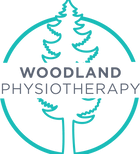We respectfully acknowledge that we live, play, and work as uninvited guests on the ancestral and unceded Coast Salish Territory; the traditional territories of the xʷməθkwəy̓əm (Musqueam), Skwxwú7mesh (Squamish) and səl̓ílwətaʔɬ/Selilwitulh (Tsleil-Waututh) Nations.

Effective. Individualized. One to One.
High quality physiotherapy for the Grandview-Woodland and Hastings-Sunrise communities of East Vancouver and beyond.

CAMPT-Certified physiotherapists are Fellows of the Canadian Academy of Manipulative Physiotherapy (FCAMPT) that have completed post-graduate education and attained internationally recognized qualifications in hands-on therapy. We provide focused treatment based on research-guided techniques that speed up patient recovery while educating them about their condition to reduce the risk of relapse. Read more at https://manippt.org/.
Book with one of our CAMPT-Certified Physiotherapists today.





The assessment and treatment of the pelvic floor can help with stress or urge incontinence, and pelvic pain, in both pre- and post-natal women.
Book with one of our Women’s Health Physiotherapists today!



Techniques to release tension in the covering of the nervous system (the dura) which can be traumatized during a traumatic collision resulting in compressed nerves.

Wood, S., Fryer, G., Tan, L. L. F., & Cleary, C. (2020). Dry cupping for musculoskeletal pain and range of motion: A systematic review and meta-analysis. Journal of bodywork and movement therapies, 24(4), 503–518. https://doi.org/10.1016/j.jbmt.2020.06.024

The use of stainless-steel instruments during therapy is thought to enhance the mechanical advantage of the therapist providing the treatment to allow for deeper penetration of muscles, ligaments, and fascia. The use of IASTM techniques is thought to assist in the release and breakdown of scar tissue, adhesions, and fascial restrictions (Cheatam et al., 2016). IASTM has been shown to improve joint range of motion in humans as well as to improve collagen repair and fibroblast proliferation in laboratory settings (Cheatam et al., 2016).
Cheatham, S. W., Lee, M., Cain, M., & Baker, R. (2016). The efficacy of instrument assisted soft tissue mobilization: a systematic review. The Journal of the Canadian Chiropractic Association, 60(3), 200–211.

Hughes, L., Paton, B., Rosenblatt, B., Gissane, C., & Patterson, S. D. (2017). Blood flow restriction training in clinical musculoskeletal rehabilitation: a systematic review and meta-analysis. British journal of sports medicine, 51(13), 1003–1011. https://doi.org/10.1136/bjsports-2016-097071


